Google opens the AMP fire hose
Columnist Barb Palser believes that the broad surfacing of AMP content in mobile search will expose a universe of AMP content that’s been hidden from view.
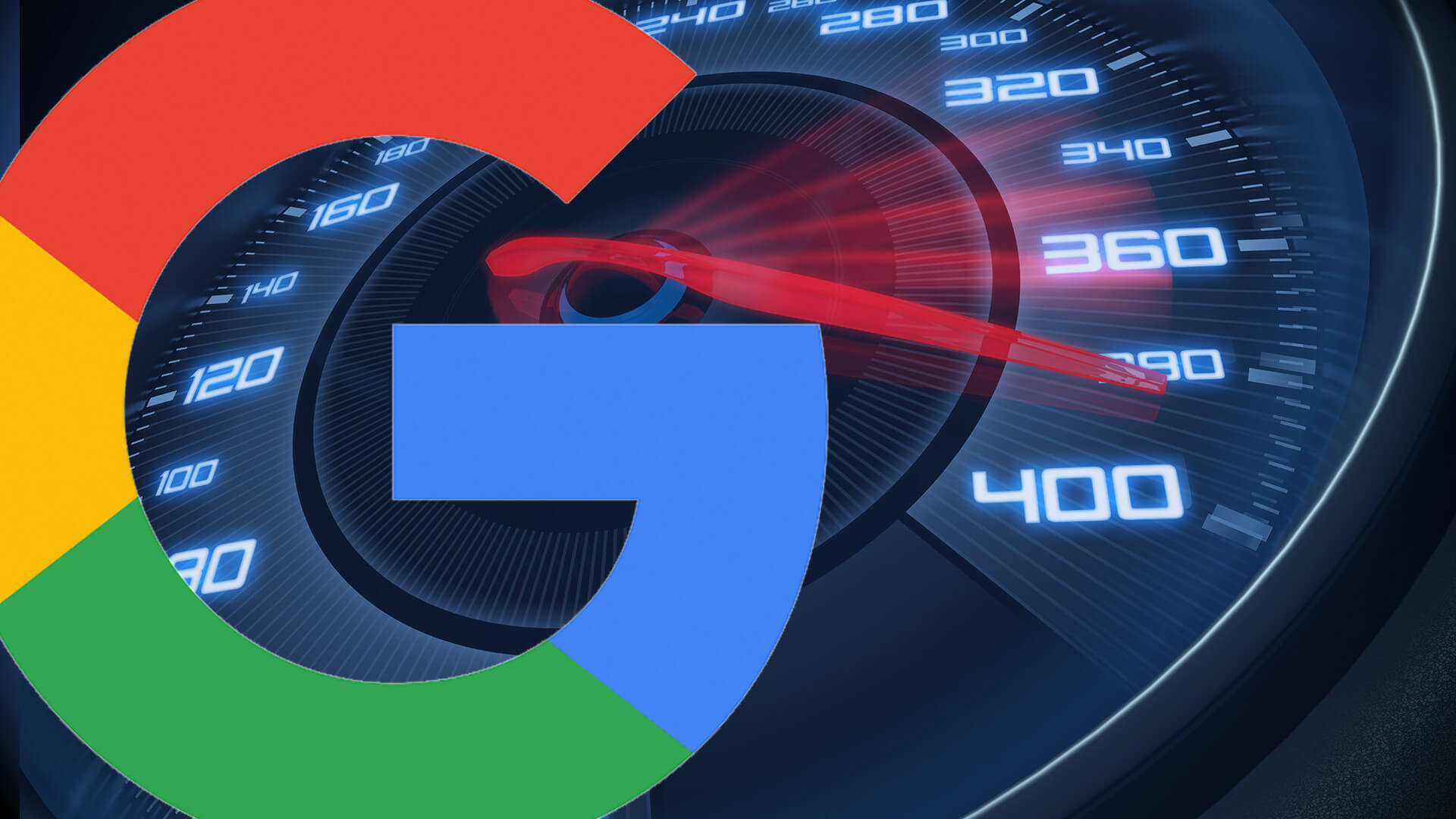
Disclosure: at the time of the writing of this article, the author was the head of product for an AMP conversion platform company. That company’s technology was acquired by Google on October 9th, 2017.
Google’s expansion of Accelerated Mobile Pages across mobile search results is underway, gradually turning the trickle of AMP traffic to a steady flow.
The September start of the “blue links” rollout, along with announcements from some high-profile participants in the AMP Project, are advancing the open-source initiative on multiple fronts.
Google’s AMP expansion
Since Accelerated Mobile Pages first appeared in Google search results in February 2016, AMPs have been mostly concentrated in the Top Stories area of mobile search results:
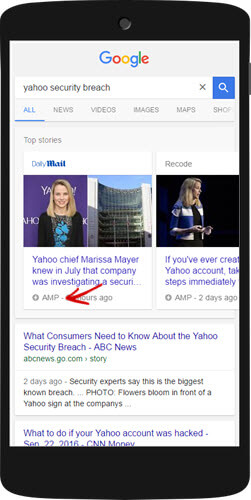
AMP Top Stories carousel in Google mobile search results
The current expansion, which was announced in August and started in mid-September, will surface AMPs throughout standard mobile search results, aka “blue links.” When the phased blue links rollout is complete, Google will always present the validated AMP version of a page to mobile users instead of the standard web link.
At this stage, Google is only surfacing a portion of available AMPs; a September 25 query returned a mixture of AMP and non-AMP results in the blue links area. When the expansion is complete, all available AMPs will be displayed.
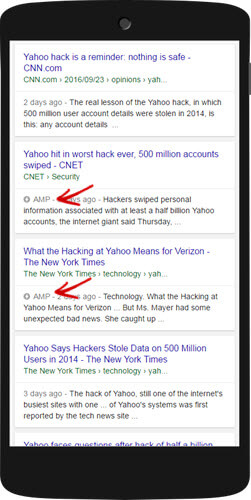
AMP blue links
Along with the blue links rollout, Google made slight modifications to its AMP viewer. The user interface is now grey instead of blue and employs an “X” button instead of a back arrow to close the viewer and return to search results.
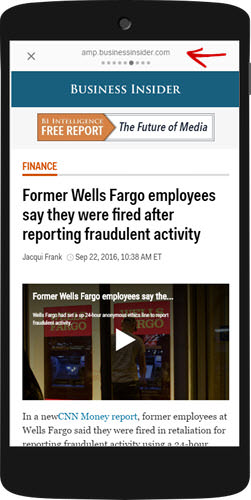
Redesigned AMP viewer
Broader, deeper AMP exposure
For news publishers, the blue links expansion will surface evergreen and long-tail content that wouldn’t have been eligible for the Top Stories area but accounts for a large portion of search traffic.
It also opens AMP exposure to commercial, vertical and non-news publishers. Essentially, any AMP-enabled content that would normally surface in search will be presented to users.
A diverse group of non-news publishers timed their own announcements to Google’s blue links rollout. On September 20, eBay announced that its AMP-enabled product pages were live after a few months of development work to resolve some feature gaps.
On the same day, Shopify announced plans to AMP-enable its merchants and Reddit announced the launch of tens of millions of AMP pages on its platform. These companies join Fandango, Food Network and other non-news publishers on AMP. There’s plenty of content to fill the fire hose.
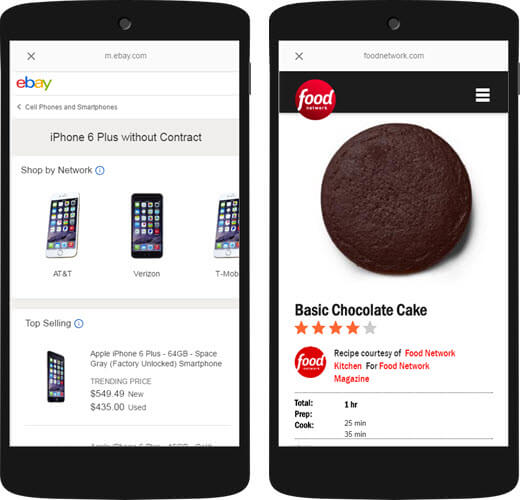
Non-news AMPs: eBay product page and Food Network recipe.
AMP benefits in Google search
Google has stated repeatedly that AMP is not a ranking factor (at least not yet), but that doesn’t mean AMP content won’t get special treatment.
Most noticeably, Google has been building user experiences to showcase AMPs above standard search results. The “Top Stories” carousel was the first example — and now Google is working on a “Live Coverage” AMP carousel for breaking news, elections, sports and other real-time events.
These modules dominate the top of the mobile viewport, above standard results where non-AMP links appear. It’s easy to imagine a variety of special AMP-based user experiences for all types of informational and commercial content.
In addition, Google has signaled that load time in general will matter in its ranking algorithm going forward — and has contributed to the growing mountain of research establishing load time as a predictor of user satisfaction and engagement. With Google’s data showing an average mobile page load time of 19 seconds and a 53-percent abandonment rate after three seconds of waiting, lightning-fast AMPs should ace any speed-related SEO tests.
Finally, users could begin to reward AMP publishers by favoring AMPs in search results. If users begin to recognize the AMP icon and associate it with a fast page, they may start choosing AMP links (or avoiding non-AMP links) in search results for certain types of content and queries.
Over time, such preferences could manifest in changes to search performance. (In early September, Google was observed testing a darker, more noticeable AMP icon.)
Combined, all of these factors could provide advantages to AMP-enabled publishers over non-AMPed publishers, even if the ranking algorithm for general Google search results doesn’t explicitly favor AMP.
AMP beyond Google
Apart from Google’s use of AMP, new participants are bringing the broader potential of the open-source AMP Project into view.
The eBay and Reddit announcements cited speed and performance as primary reasons for adopting AMP — and opened the door to future AMP-only strategies.
Excerpt from Reddit’s blog post (emphasis added):
AMP pages look great and load fast on desktop just like they do on mobile. Maintaining good performance to pages as they change often amounts to a time consuming game of Whac[k]-A-Mole but we can be confident our AMP pages will always be fast. So, for many kinds of pages, we think the AMP version is the only version we’ll ever need.
Excerpt from eBay’s blog post (emphasis added):
Although both of them [AMP and non-AMP browse pages] are highly optimized, look the same, and share most of the code, updating both versions is still a maintenance overhead. In addition, we always need to watch out for feature parity. In the future, based on how AMP pages are performing, we may choose to have one mobile version (AMP) and serve it to all platforms.
The expansion of AMP to desktop experiences and the potential for AMP to replace standard web pages have been anticipated by the AMP Project from the start — but these are among the first large publishers to talk publicly about it.
A few days later, Bing announced AMP support in its search app for iOS and Android in order to provide a better, more consistent user experience. Like Google, Bing will link to the AMP version of a page when available.
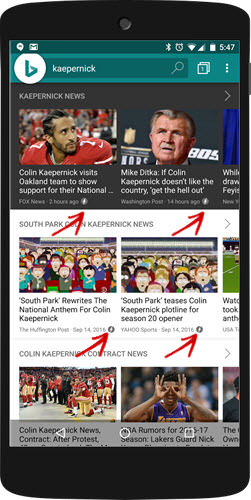
AMP results in Bing Search app
This is something any search engine, social platform or other referrer could do — every standard web page with an AMP counterpart has a header tag pointing to the AMP version. Social news aggregator Nuzzel has been linking to AMPs for some time, and Twitter has taken initial steps to link to AMP in certain contexts.
Google’s promotion of AMP across its products is generating awareness, providing incentives for publisher adoption and driving feature development and innovation.
At the same time, the involvement of diverse participants and non-Google-dependent use cases will be critical to AMP’s long-term success and its mission to improve performance across the mobile web — not just a corner of it. The AMP format was seeded in Google’s environment but was never meant to stay there.
Contributing authors are invited to create content for Search Engine Land and are chosen for their expertise and contribution to the search community. Our contributors work under the oversight of the editorial staff and contributions are checked for quality and relevance to our readers. The opinions they express are their own.
Related stories
New on Search Engine Land